Discover the most beautiful West Coast National Parks in the USA inc. our top tips for each, things to do, the best time to visit AND a printable PDF checklist!
The West Coast of the United States is home to some of the most breathtaking national parks in the country. From the rugged cliffs of Yosemite to the lush rainforests of Olympic, these parks offer a diverse array of landscapes and activities for visitors to enjoy.
Whether you’re looking for an opportunity to hike, camp, or simply take in the area’s natural beauty, there’s a national park on the West Coast that’s sure to impress. Here we have compiled a list of 35 of the most stunning national parks on the West Coast, each with its own unique features that make it worth a visit. And with the tallest trees, incredible waterfalls, magical geysers, vast open spaces, petrified forests, and epic stargazing (just to name a few!) these parks offer something for everyone.
For our West Coast National Parks list, we have split it into 2 sections – those National Parks that are actually in States on the West Coast of the USA, and those National Parks that are in the West (but not necessarily on the coast).
In each section, we have listed the parks in order of visitor numbers, from highest to lowest – on the basis that those that are the most visited are the most beautiful. Although we know this may not be the absolute best way of ranking them and so we are happy to let you be the judge of that – and if you disagree, let us know in the comments below, or vote with your feet and change the visitor numbers!
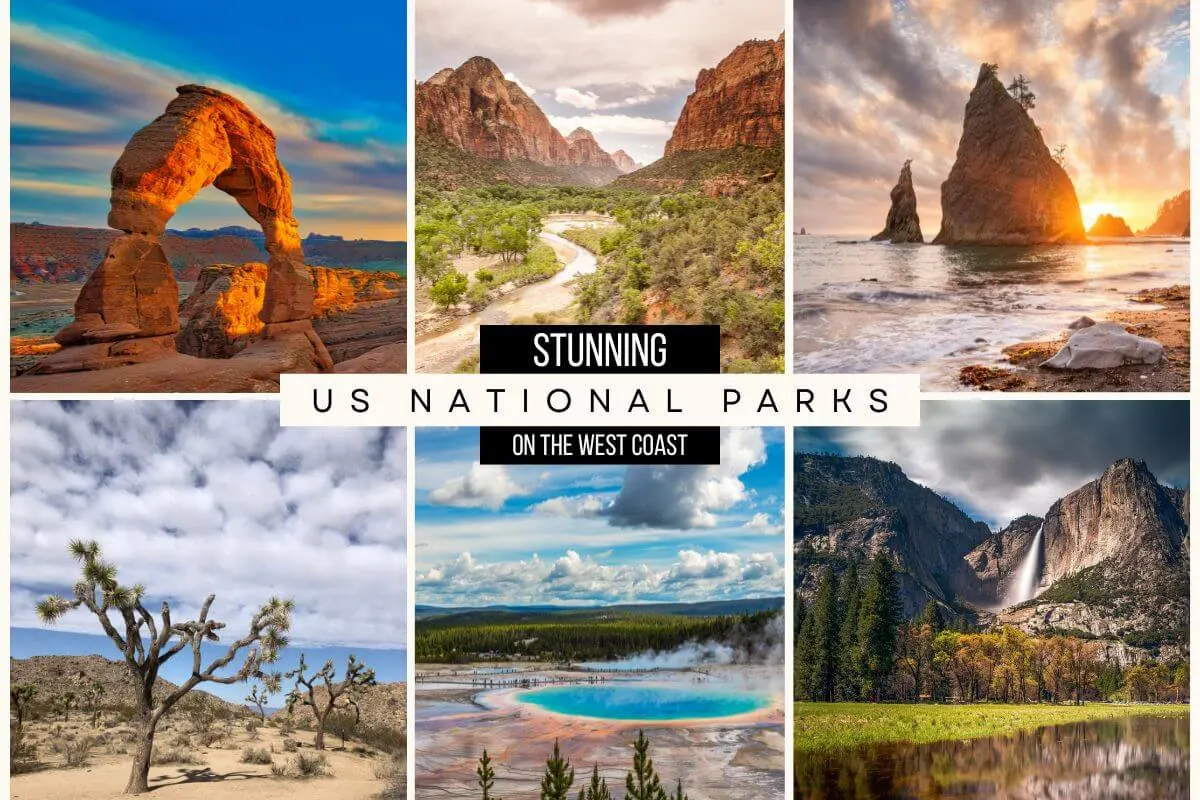 Disclaimer: Almost all posts on this site contain affiliate links, and this one containing a Complete List of West Coast National Parks in the USA is no different. This means that if you click on any of the links in this post (and make a purchase) I may receive a small commission at absolutely no cost to you. Each post is carefully crafted to (hopefully!) answer all your questions and recommendations are made where we believe they will improve your trip and help with your planning. As such we thank you in advance should you decide to click & buy. Read my full Disclosure here.
Disclaimer: Almost all posts on this site contain affiliate links, and this one containing a Complete List of West Coast National Parks in the USA is no different. This means that if you click on any of the links in this post (and make a purchase) I may receive a small commission at absolutely no cost to you. Each post is carefully crafted to (hopefully!) answer all your questions and recommendations are made where we believe they will improve your trip and help with your planning. As such we thank you in advance should you decide to click & buy. Read my full Disclosure here.
In This Post
Interactive Map of the West Coast National Parks
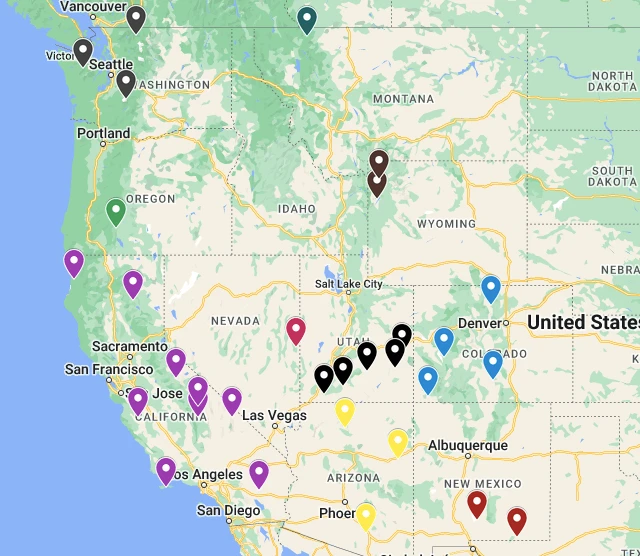 This is a map of the 35 West Coast National Parks in the USA, is color-coded by state. Click the map itself or here to open it in another window where you can zoom in and out between parks.
This is a map of the 35 West Coast National Parks in the USA, is color-coded by state. Click the map itself or here to open it in another window where you can zoom in and out between parks.
West Coast National Parks
These are the National Parks that are located in States that border the West Coast of the USA, namely California, Oregon and Washington. We have also included a park from Southern Alaska in the next section as it is technically on the West Coast, but we haven’t included any of the other Alaska NPs due to their remoteness. Head over to our Complete US National Parks List by State for more on those.
Yosemite National Park
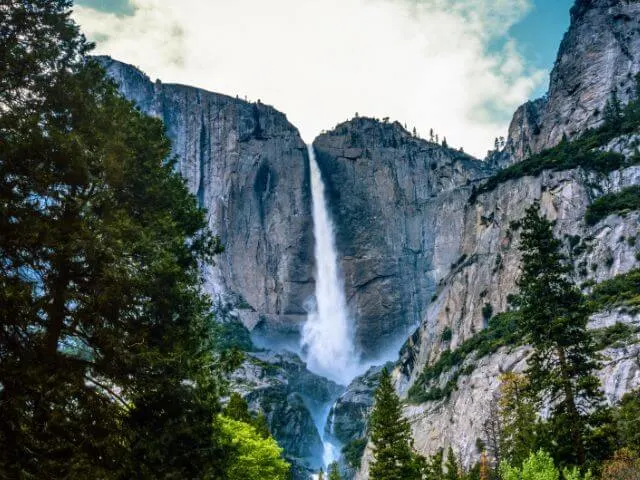 Year Established: 1890
Year Established: 1890
Annual Visitors: 4.4 million
Best Time to Visit: June to October
Yosemite National Park Highlights: Hike Yosemite Falls and Half Dome, Watch the Sunset at Taft Point, See Bridalveil Falls, hike the Mist Trail to Vernal and Nevada Falls and Explore Yosemite Valley.
Yosemite National Park is located in the Sierra Nevada mountains in California and is known for its spectacular granite cliffs, waterfalls, and giant sequoia groves. The park was first protected in 1864 and is now one of the most popular national parks in the country, with over 4 million visitors annually.
The park is home to some of the most iconic landmarks in the United States, including Half Dome and El Capitan, which are popular spots for rock climbing. The park also offers a variety of outdoor activities such as hiking, camping, and backpacking, as well as scenic drives and ranger-led programs.
One of the best times to visit Yosemite National Park is during the spring and fall, when the crowds are smaller and the weather is mild. In the spring, wildflowers are in bloom and the waterfalls are at their peak flow. In the fall, the deciduous trees turn beautiful shades of orange and gold.
Visitors should also be aware that the park can be quite busy during the summer months, so it is best to plan ahead and make reservations for camping or lodging. Also, it is recommended to bring warm clothing as temperatures can drop significantly, even during the summer.
Olympic National Park (Washington)
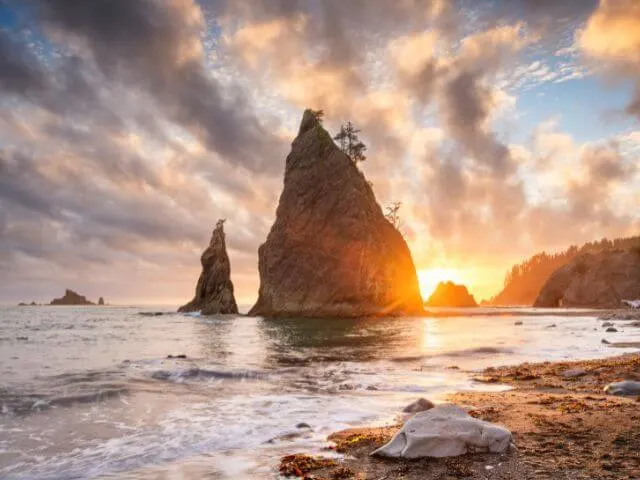 Year Established: 1938
Year Established: 1938
Annual Visitors: 3.2 million
Best Time to Visit: June to September
Olympic National Park Highlights: See Ruby Beach, Hike Hurricane Ridge, Hoh Rain Forest and Shi Shi Beach.
Olympic National Park is located in the state of Washington, USA. The park was established in 1938 and covers an area of 922,651 acres. The park is known for its unique and diverse landscapes, which include rugged coastline, ancient rainforests, and alpine meadows.
Some of the highlights of Olympic National Park include the Hoh Rainforest, which is home to some of the largest trees in the world, and the Hurricane Ridge, which offers panoramic views of the Olympic Mountains. Visitors can also take in the beauty of the park’s many waterfalls, including Sol Duc Falls and Marymere Falls. The park also offers a variety of recreational activities, including hiking, camping, and fishing.
The best time to visit Olympic National Park is during the summer months, when the weather is mild and the park’s many trails are accessible. The park can also be visited in winter, although some areas may be closed due to snow.
Joshua Tree National Park (California)
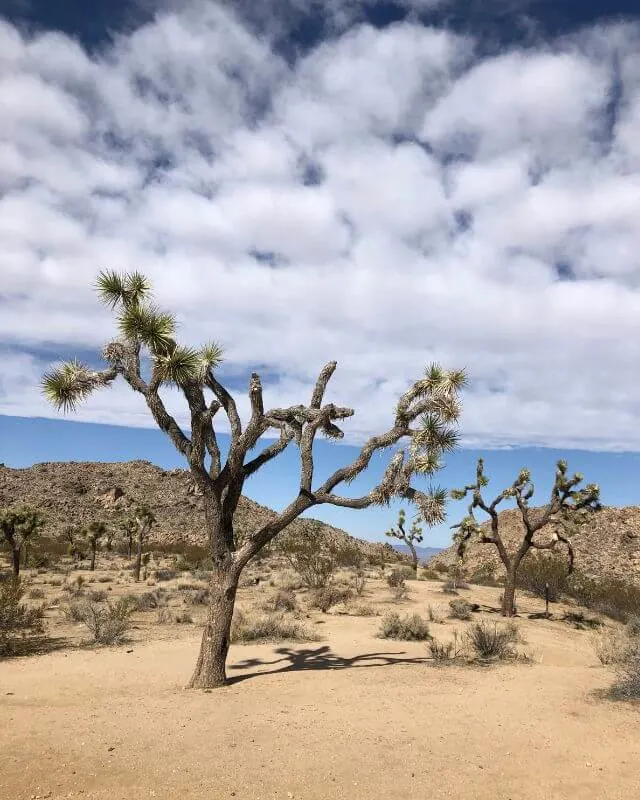 Year Established: 1994
Year Established: 1994
Annual Visitors: 3.0 million
Best Time to Visit: March to April, October to November
Joshua Tree National Park Highlights: Sunrise at the Cholla Cactus Garden, See Skull Rock, Drive to Keys View and Geology Tour Road, and Hike Ryan Mountain.
Joshua Tree National Park is a desert park located in southern California, known for its stunning rock formations and dense forests of Joshua Trees. Visitors can enjoy hiking, camping, and rock climbing in the park.
Spring and fall are the best seasons to visit, as temperatures are milder and wildflowers are in bloom. When planning a trip, it is important to bring plenty of water and protect yourself from the sun, as temperatures can reach over 100 degrees Fahrenheit during the summer months.
Additionally, it is important to note that some areas of the park may be closed due to preservation efforts, so it is a good idea to check the park’s website before visiting.
Death Valley National Park (California)
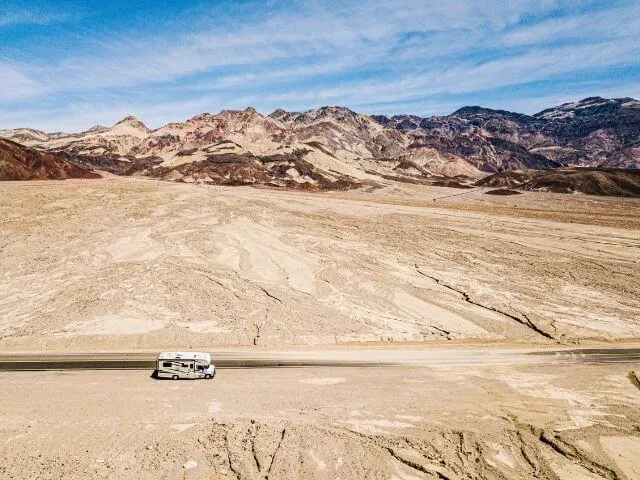 Note: Death Valley also crosses into Nevada and is the closest National Park to Las Vegas.
Note: Death Valley also crosses into Nevada and is the closest National Park to Las Vegas.
Year Established: 1994
Annual Visitors: 1.7 million
Best Time to Visit: November to March
Death Valley National Park Highlights: See Ubehebe Crater, visit Badwater Basin, Hike Mesquite Flat Sand Dunes at sunset, See Zabriskie Point at sunrise & stargaze.
Death Valley National Park is a unique and diverse destination located in the Mojave Desert in California. The park is known for its vast and unforgiving landscapes, including the lowest point in North America, Badwater Basin, and the hottest place in the world, Furnace Creek.
Visitors can explore the park through hiking, camping, and scenic drives, and should be aware that temperatures can reach extreme levels during the summer months, making it best to visit during the cooler months of fall, winter, and spring.
The park also offers a variety of other experiences, from visiting the historic mining town of Rhyolite to seeing the famous rock formations of Artist’s Drive and Zabriskie Point. Visitors should also be aware that the park is incredibly vast and remote, and it is important to come prepared with enough water and supplies.
– If you can afford to travel, you can afford – and should definitely buy – Travel Insurance
– For Car Rental (anywhere in the world!) we recommend Discover Cars
Mount Rainier National Park (Washington)
 Year Established: 1899
Year Established: 1899
Annual Visitors: 1.5 million
Best Time to Visit: July to September
Mount Rainier National Park Highlights: Eide the Mount Rainer Gondola to Crystal Mountain, Hike the Skyline Trail, Fremont Lookout, Tolmie Peak and Sourdough Ridge Trail.
Mount Rainier National Park is located in the state of Washington and is home to the 14,410-foot volcano, Mount Rainier. This park offers visitors a variety of recreational opportunities, including hiking, camping, and backpacking. The park’s history dates back to 1899 when it was established as the fifth national park in the United States.
The park’s highlights include the stunning views of Mount Rainier, which can be seen from many of the park’s viewpoints, as well as the park’s many hiking trails. Some popular hikes include the Skyline Trail, which offers panoramic views of the mountain and the surrounding valleys, and the Nisqually Vista Trail, which takes hikers through the park’s subalpine meadows.
The best time to visit Mount Rainier National Park is during the summer months, as the park’s snow melts and the trails become accessible. This is also the time when the park’s wildflowers are in bloom, making for a beautiful sight.
Sequoia National Park (California)
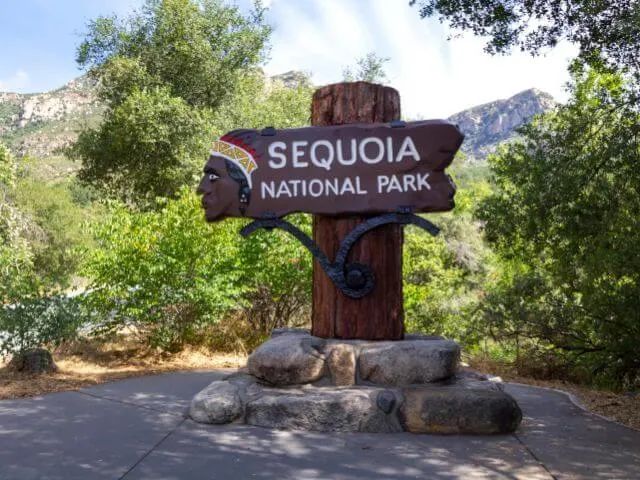 Year Established: 1890
Year Established: 1890
Annual Visitors: 1.3 million
Best Time to Visit: June to October
Sequoia National Park Highlights: Drive under Tunnel Log, Hike Big Trees Trail and Moro Rock, and See the General Sherman tree.
Sequoia National Park is located in California’s southern Sierra Nevada mountain range. The park is known for its giant sequoia trees, which are some of the largest and oldest living organisms on Earth. The park’s most famous tree, the General Sherman Tree, is considered the largest tree in the world by volume. The park also boasts impressive granite cliffs, deep canyons, and a variety of wildlife.
The best time to visit Sequoia National Park is during the spring and fall seasons. During these times, the weather is mild and the crowds are less. Summer can get very hot, and winter can bring heavy snowfall, making some areas of the park inaccessible. Visitors should also be aware that some of the park’s main roads and trails may close during the winter season. At the opposite end of the spectrum, the park can get quite busy during summer weekends, so try to plan your visit during the week to avoid the crowds.
Crater Lake National Park (Oregon)
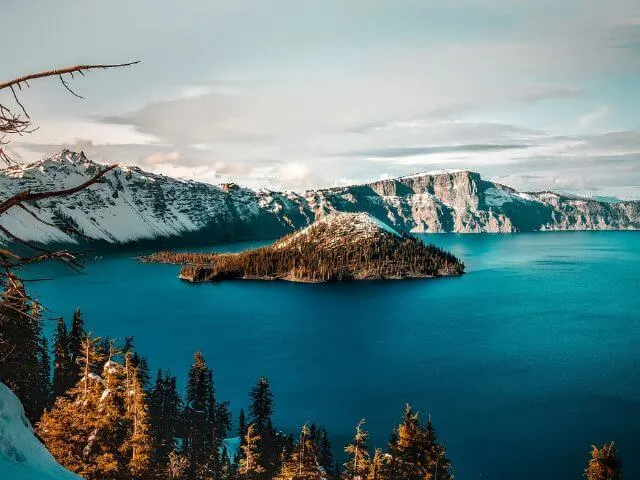 Year Established: 1902
Year Established: 1902
Annual Visitors: 705,000
Best Time to Visit: July to September
Crater Lake National Park Highlights: Drive Rim Drive, Hike Mount Scott, Hike Watchman Peak
Crater Lake National Park is located in southern Oregon and is known for its deep blue water and stunning views.
The park is home to Crater Lake, which was formed by the collapse of an ancient volcano called Mount Mazama. The lake is the deepest in the United States and one of the clearest in the world. Visitors can take a boat tour of the lake to get a closer look at the many islands and cliffs that surround it.
The park also offers a variety of hiking trails, including the popular Cleetwood Cove Trail, which leads to the lake’s shore. In the winter, the park offers cross-country skiing and snowshoeing opportunities.
The best time to visit Crater Lake National Park is during the summer months when the weather is warm and the snow has melted, allowing for the best visibility of the lake and access to park amenities. However, the park can be enjoyed year-round and offers a unique experience in each season.
Kings Canyon National Park (California)
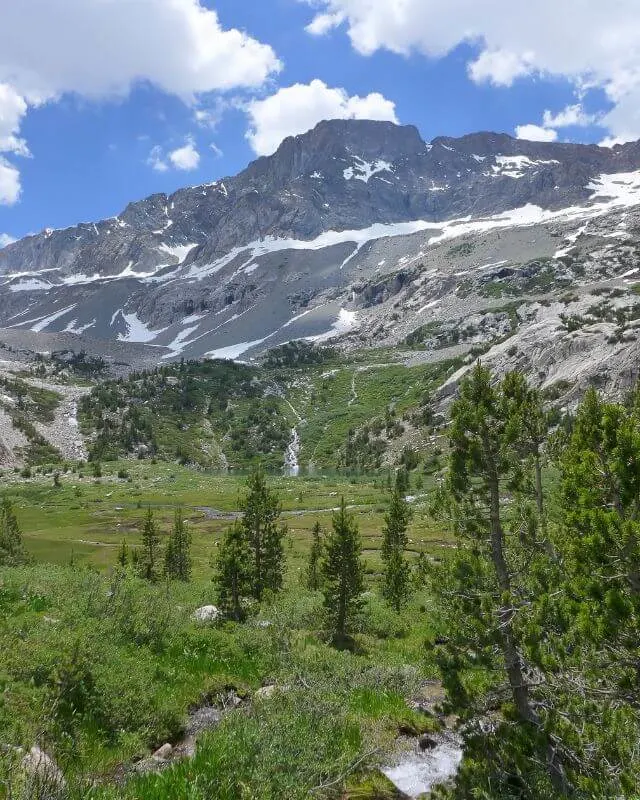 Year Established: 1940
Year Established: 1940
Annual Visitors: 630,000
Best Time to Visit: June to October
Kings Canyon National Park Highlights: Hike Zumwalt Meadows, Backpack Rae Lakes Loop, Visit Grant Grove and Drive Kings Canyon Scenic Byway.
Kings Canyon National Park is located in the southern Sierra Nevada mountain range in California. The park is known for its deep canyons, towering granite cliffs, and towering sequoia trees. The park’s main attraction is the General Grant Tree, which is the second-largest tree in the world and is often referred to as the “Nation’s Christmas Tree.” The park also features the spectacular Kings Canyon, which is over a mile deep and is one of the deepest canyons in North America.
The best time to visit Kings Canyon National Park is during the summer months, from June to September. During this time, the weather is warm and sunny, and the roads and trails are clear. The park is also open year-round, but some of the higher elevations may be snow-covered during the winter months. Visitors should be prepared for varying weather conditions, and be aware of the park’s rules and regulations regarding camping, hiking and backpacking. It’s also recommended to bring plenty of water and be aware of the park’s bear safety guidelines.
Lassen Volcanic National Park (California)
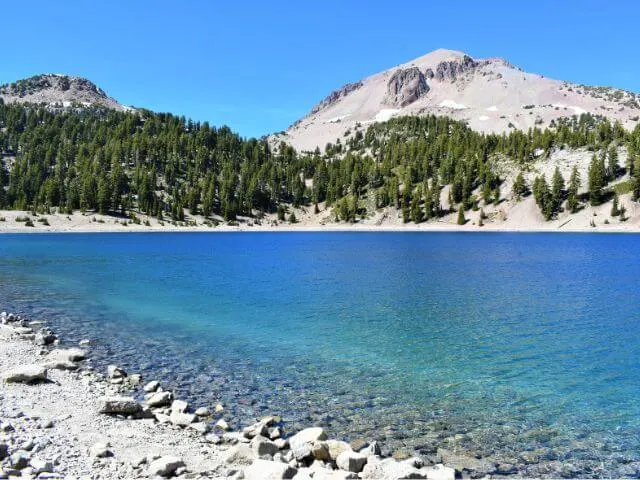 Year Established: 1916
Year Established: 1916
Annual Visitors: 517,000
Best Time to Visit: June to October
Lassen Volcanic National Park Highlights: Hike Lassen Peak and Bumpass Hell, Drive Main Park Road, Visit Kings Creek Falls and See Manzanita Lake.
Lassen Volcanic National Park is located in Northern California and is known for its diverse volcanic landscapes. The park is home to Lassen Peak, the largest volcano in the park, which last erupted in 1915. Visitors can hike to the summit for panoramic views of the surrounding area.
The park also features hydrothermal areas with fumaroles, boiling mud pots, and hot springs, such as Bumpass Hell, which is one of the largest hydrothermal areas in the park.
The best time to visit Lassen Volcanic National Park is during the summer months, when the park’s main road and most of the park’s hiking trails are open. Visitors can also enjoy ranger-led programs, such as guided nature walks and campfire talks, during this time.
Winter also offers a unique opportunity to see the park’s volcanic features, such as snow-covered fumaroles and hot springs. However, visitors should be prepared for snowy and icy conditions and be aware that some park facilities and roads may be closed during this time.
Redwood National Park (California)
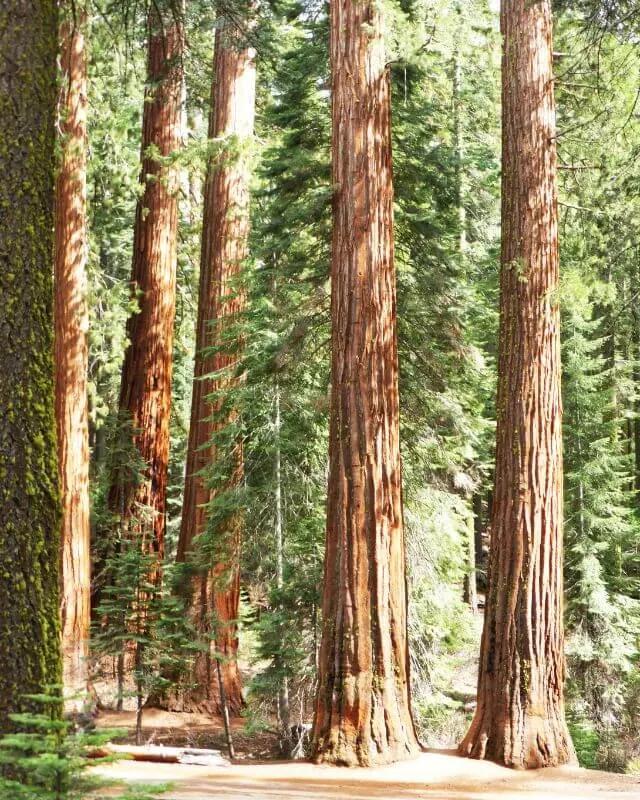 Year Established: 1968
Year Established: 1968
Annual Visitors: 500,000
Best Time to Visit: March to November
Redwood National Park Highlights: Hike Boy Scout Tree Trail and Tall Trees Grove, See Stout Grove, and drive the Newton B. Drury Scenic Byway.
Redwood National Park, located in northern California, is home to some of the tallest and oldest trees in the world. The park is made up of four separate units, including Redwood National Park, Jedediah Smith Redwoods State Park, Del Norte Coast Redwoods State Park and Prairie Creek Redwoods State Park.
The park is a haven for hikers, with over 100 miles of trails that wind through towering old-growth redwoods and along scenic coastal cliffs. Visitors can also enjoy fishing, biking, and horseback riding in the park.
One of the main highlights of Redwood National Park is the chance to see the ancient redwood trees, some of which are over 2,000 years old. The park is also home to a diverse array of wildlife, including black bears, Roosevelt elk, and marbled murrelets. The park’s coastal area also offers opportunities for beachcombing, tidepooling and birdwatching.
The best time to visit the park is during the summer, when the weather is mild and the days are longest. However, it is always recommended to check the weather forecast and pack accordingly as the weather can change rapidly in the park.
Channel Islands National Park (California)
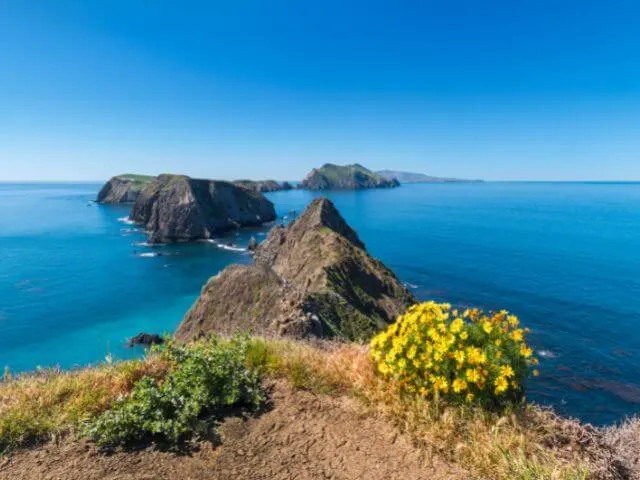 Year Established: 1980
Year Established: 1980
Annual Visitors: 410,000
Best Time to Visit: April to June and August to October
Channel Islands National Park Highlights: Go Whale Watching, Kayak Santa Cruz Island, Hike Inspiration Point, Go Snorkelling.
Channel Islands National Park, located off the coast of California, is a unique and diverse destination for outdoor enthusiasts. The park is made up of five islands, each with its own ecosystem and array of wildlife.
Visitors can explore the islands through hiking, kayaking, and snorkeling, and even camp overnight on some of them. The park is also home to a wide variety of marine mammals and seabirds and features the largest sea cave in the world, the Painted Cave, on Santa Cruz Island.
The best time to visit is during the spring and fall when the weather is mild and the crowds are smaller.
Pinnacles National Park (California)
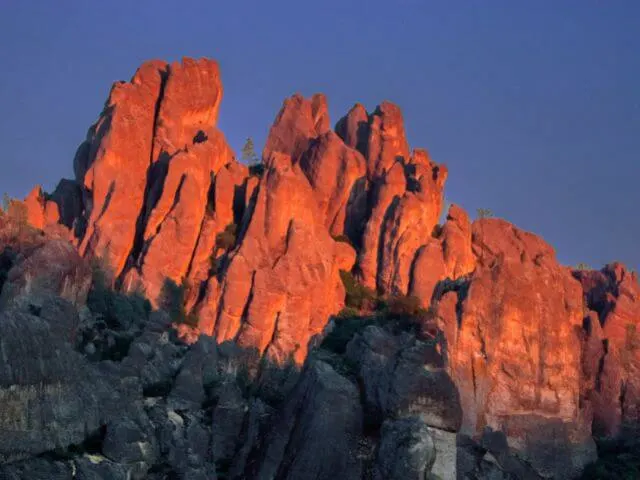 Year Established: 2013
Year Established: 2013
Annual Visitors: 175,000
Best Time to Visit: March to May, September to November
Pinnacles National Park Highlights: Hike High Peaks Trail, Moses Spring and Bear Gulch, explore the Balconies cave, and spot California condors.
Pinnacles National Park is located in central California and is known for its unique rock formations and diverse array of flora and fauna. The park was established in 1913 and includes both the eastern and western sections of the Pinnacles formation, which were formed by volcanic activity 23 million years ago.
The park’s highlights include the impressive Pinnacles spires and rock formations, as well as the vast network of caves that run through the park. The park is also home to a wide variety of wildlife, including the California Condor, which can be spotted soaring above the park’s skies.
The best time to visit Pinnacles National Park is during the spring and fall months when the temperatures are mild and the wildflowers are in bloom. Summer can be quite hot, and the park can get crowded, so it is best to visit early in the morning or later in the day during the summer months.
Visitors should also be aware that the park has limited water resources, so it’s important to bring plenty of water when visiting. Hiking and rock climbing are popular activities in the park, but visitors should also be prepared for steep and rocky terrain.
North Cascades National Park (Washington)
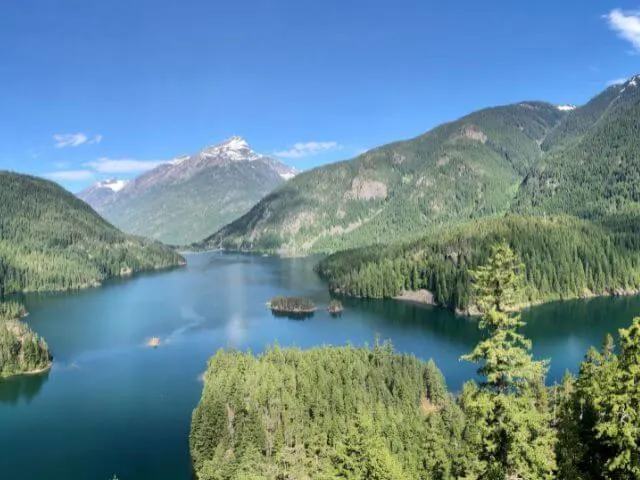 Year Established: 1968
Year Established: 1968
Annual Visitors: 38,000
Best Time to Visit: June to September
North Cascades National Park Highlights: Drive North Cascades Scenic Highway, Hike Trappers Peak and Cascade Pass, enjoy the views from the Washington Pass Overlook and the Diablo Lake Vista Point.
North Cascades National Park is located in the state of Washington, USA, and is known for its rugged, glaciated peaks and stunning alpine landscapes. The park was established in 1968 and covers an area of over 500,000 acres. It is home to over 300 glaciers, including the largest glaciers in the contiguous United States. The park also features beautiful alpine meadows, old-growth forests, and over 300 miles of hiking trails.
Some of the highlights of the park include hiking to the summit of Mount Baker, the third highest mountain in Washington, visiting the picturesque Diablo Lake, and exploring the Ross Lake National Recreation Area.
The best time to visit North Cascades National Park is during the summer months of June to September when the weather is warm and the snow has melted, making it perfect for hiking and exploring the park. This is also when the park’s wildflowers are in full bloom, adding even more beauty to the already stunning landscapes.
US National Parks that are in the West
Grand Canyon National Park (Arizona)
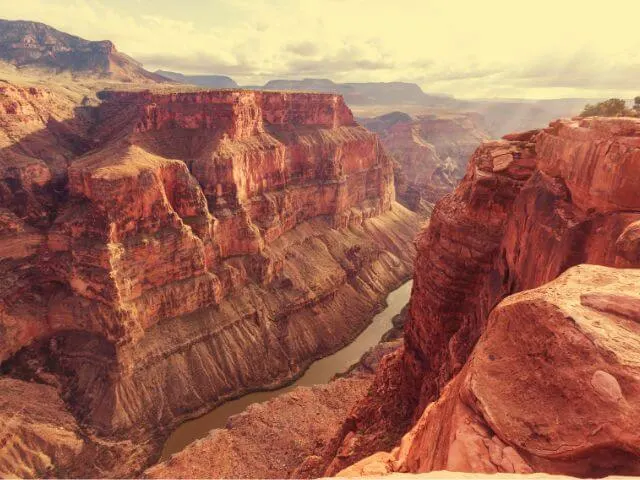 Year Established: 1919
Year Established: 1919
Size: 1.2 million acres
Annual Visitors: 6.0 million
Best Time to Visit: March to May, September to October
Grand Canyon National Park Highlights: Hike South Kaibab, Hike Rim-to-Rim Trail, Visit South Rim viewpoints, Hike Bright Angel, Drive Hermit Road, take a flightseeing helicopter tour.
Grand Canyon National Park is located in northern Arizona and is home to the iconic Grand Canyon, a vast chasm that stretches over 277 miles long, up to 18 miles wide and over a mile deep. The canyon is considered one of the natural wonders of the world and is a UNESCO World Heritage Site. The park is also home to a diverse array of plants and animals, including the endangered California condor, bighorn sheep, and elk.
The park is popular with visitors who are interested in hiking, camping, and sightseeing. Visitors can hike to the bottom of the canyon along the Bright Angel or South Kaibab trails, take a scenic drive along Desert View Drive, or take a guided tour by mule. Visitors can also take a helicopter or plane tour to get an aerial view of the canyon.
The best time to visit the Grand Canyon National Park is between September and November, or March and May. During these months, the weather is mild, the crowds are thinner, and the fall foliage and spring wildflowers provide a colorful backdrop. Visitors should be aware that the park is incredibly busy in the summer months and it is recommended that visitors plan ahead to reserve campsites and tours in advance.
Rocky Mountain National Park (Colorado)
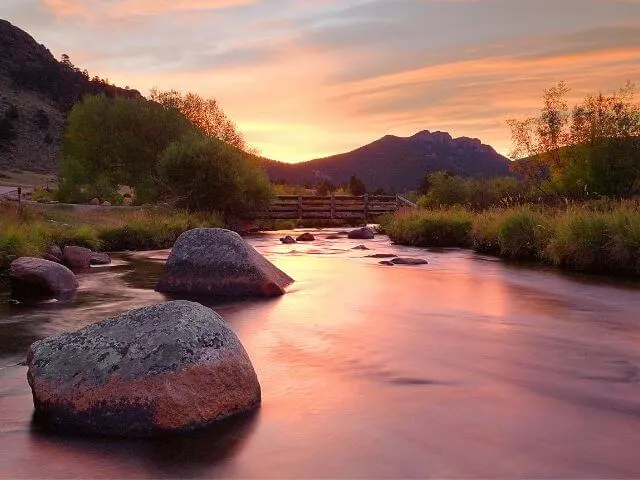 Year Established: 1915
Year Established: 1915
Annual Visitors: 4.7 million
Best Time to Visit: June to September
Rocky Mountain National Park Highlights: Hike Sprague Lake, Emerald Lake and Sky Pond Lake, Drive Trail Ridge Road
Rocky Mountain National Park is located in northern Colorado (and is the closest National Park to Denver). It spans over 415 square miles of rugged mountain terrain.
The park is home to a diverse array of wildlife, including elk, bighorn sheep, and moose, as well as over 300 miles of hiking trails that offer breathtaking views of the park’s peaks, valleys, and alpine lakes.
The park’s highest peak, Longs Peak, stands at 14,259 feet and is a popular destination for experienced hikers and climbers.
The best time to visit Rocky Mountain National Park depends on what type of activities you plan on doing. The park is open year-round, but certain seasons offer different experiences.
Summer is the most popular time to visit, with mild temperatures and wildflowers in bloom. This is also the best time for hiking and camping. Winter offers the opportunity to see the park’s wildlife and enjoy winter sports such as cross-country skiing and snowshoeing. Spring and fall are also great times to visit, as the park’s colors change with the changing of the seasons.
Visitors should be prepared for variable weather and bring appropriate clothing and gear. It is also important to be aware of altitude sickness and take necessary precautions when planning your trip.
Zion National Park (Utah)
 Year Established: 1919
Year Established: 1919
Annual Visitors: 4.5 million
Best Time to Visit: April to October
Zion National Park Highlights Hike The Narrows, Hike Angels Landing, Visit the Emerald Pools and Weeping Rock, Drive Zion Canyon Scenic Drive.
Zion National Park is located in the southwestern United States in the state of Utah. The park is known for its spectacular sandstone cliffs and canyons, which have been carved over millions of years by the Virgin River and its tributaries.
The park’s history dates back to the early 20th century, when it was established as Mukuntuweap National Monument in 1909. The park was later renamed Zion National Park in 1919 and has since been a popular destination for hikers, campers, and nature enthusiasts.
One of the park’s main highlights is the Narrows, a 16-mile hike through a narrow canyon with towering walls on either side. Other popular activities include hiking the Angels Landing trail, which offers breathtaking views of the valley below, and exploring the Kolob Canyons section of the park, which features red rock cliffs and unique rock formations. For more, read our guide to the Best Things to do in Zion (perfect for 1st timers!)
The best time to visit Zion National Park is during the spring and fall, when the weather is mild and the crowds are less. During the summer, temperatures can reach over 100 degrees Fahrenheit, and the park can get crowded. In the winter, some of the park’s trails may be closed due to snow and ice.
Yellowstone National Park (Wyoming)
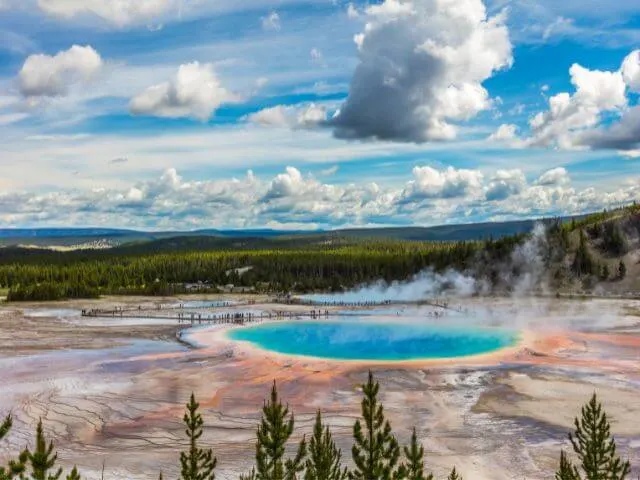 Note: Most of Yellowstone is in Wyoming, but small parts cross into Idaho and Montana.
Note: Most of Yellowstone is in Wyoming, but small parts cross into Idaho and Montana.
Year Established: 1872
Annual Visitors: 4.0 million
Best Time to Visit: June to August
Yellowstone National Park Highlights: See Grand Prismatic Spring, See Old Faithful, Drive Grand Loop Road, and Hike Mount Washburn.
Yellowstone National Park is a natural wonder located in the western United States, primarily in Wyoming but also extending into Montana and Idaho. The park is known for its geothermal features, including Old Faithful geyser and the colorful Grand Prismatic Spring. It is also home to a diverse array of wildlife, including bison, elk, and grizzly bears.
RELATED: Read our Complete Guide to Yellowstone National Park
The park’s history dates back to the 1800s when it was first set aside as a public park, it is also the first national park in the world, established in 1872.
The best time to visit Yellowstone National Park is during the summer months of June through August when most of the park’s facilities and roads are open. This is also the peak season for tourism, so visitors should expect crowds.
Spring and fall are also good times to visit, as the park’s wildlife is most active during these seasons and the crowds are smaller. Winter is also a great time to visit as the park turns into a winter wonderland, but some facilities and roads may be closed due to snow.
Grand Teton National Park (Wyoming)
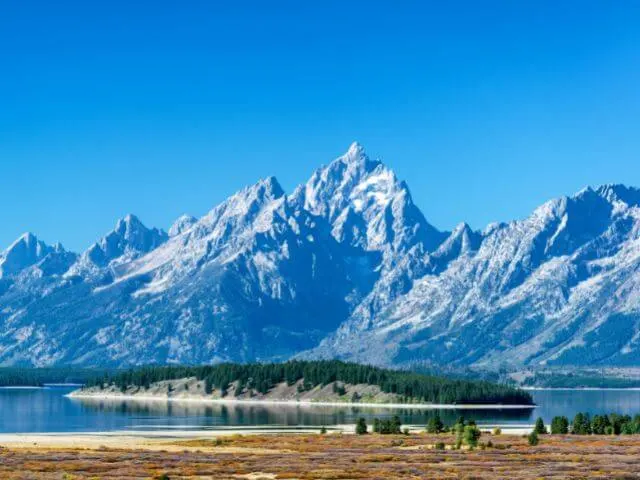 Year Established: 1929
Year Established: 1929
Annual Visitors: 3.4 million
Best Time to Visit: June to September
Grand Teton National Park Highlights: Visit Mormon Row and Schwabacher Landing, Hike Inspiration Trail and Hidden Falls, Backpack to Lake Solitude.
Grand Teton National Park is known for its stunning mountain landscapes and diverse array of outdoor activities. The park is named after Grand Teton, the highest peak in the Teton Range, which stands at 13,770 feet.
The park offers a variety of highlights for visitors to enjoy, including hiking, camping, fishing, and wildlife viewing. Visitors can take a scenic drive along the Teton Park Road to take in the views of the Teton Range, or hike to the summit of Grand Teton for a panoramic view of the surrounding mountains.
Other popular activities include fishing in Jenny Lake and exploring the park’s diverse wildlife, including bison, elk, moose, and bears.
The best time to visit Grand Teton National Park is during the summer months of June to September, when the weather is warm and the snow has melted, making it easier to access the park’s many trails.
Glacier National Park (Montana)
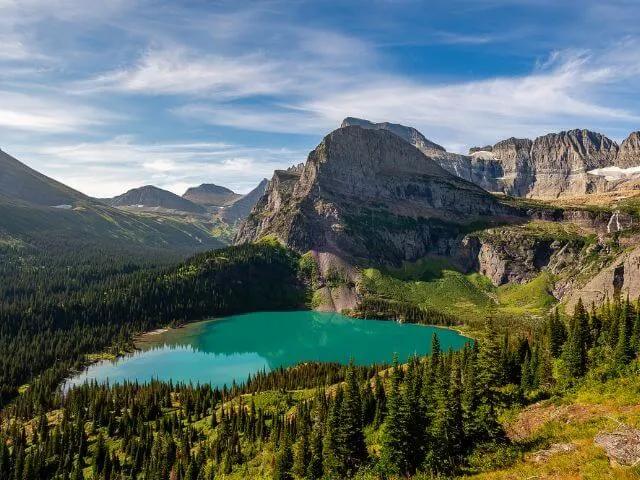 Year Established: 1910
Year Established: 1910
Annual Visitors: 3.1 million
Best Time to Visit: June to September
Glacier National Park Highlights: Drive Going-to-the-Sun Road, Hike Grinnell Glacier and Hidden Lake, Hike the Highline Trail, see Wild Goose Island, visit Many Glacier, Enjoy Lake McDonald
Glacier National Park is located in the northern Rocky Mountains of Montana and encompasses over 1 million acres of rugged wilderness. It was established as a national park in 1910 and is known for its spectacular landscapes, including glaciers, alpine meadows, and rugged peaks.
The park is home to over 700 miles of hiking trails, which provide visitors with the opportunity to explore the diverse ecosystems of the park.
The best time to visit Glacier National Park is during the summer months, from June to September, when the weather is mild and the snow has melted. This is the peak season for visitors, but it is also the best time to experience the park’s natural beauty.
Visitors should be prepared for varying weather conditions, as well as wildlife encounters. It is also recommended to bring appropriate footwear and clothing, as well as plenty of water, as some trails can be steep and strenuous.
Bryce Canyon National Park (Utah)
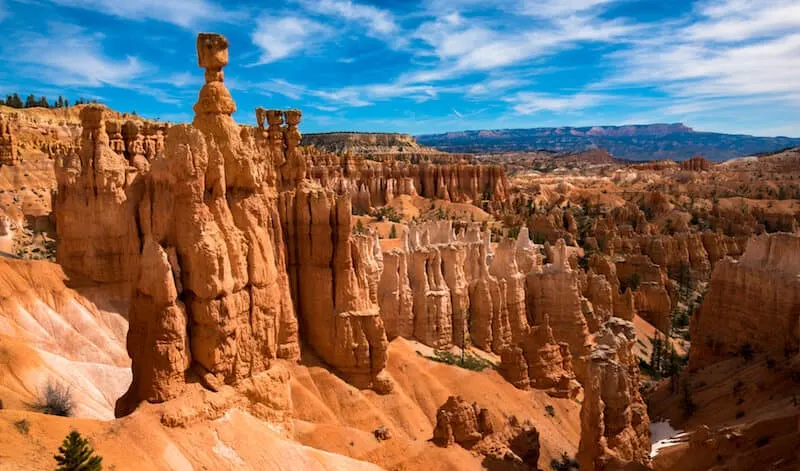 Year Established: 1928
Year Established: 1928
Annual Visitors: 2.6 million
Best Time to Visit: April to October
Bryce Canyon National Park Highlights: See sunrise along the Rim Trail, Drive the Scenic Drive and stop at all the viewpoints (Sunrise Point, Sunset Point, Bryce Point and Inspiration Point etc), Hike Navajo and Queen’s Garden Loop.
Bryce Canyon National Park is located in southern Utah and is known for its unique and vibrant orange and red rock formations called hoodoos.
The park’s main feature is the Bryce Amphitheater, a natural amphitheater created by erosion that contains thousands of hoodoos. Visitors can hike along the rim of the amphitheater to get a panoramic view of the hoodoos and the surrounding landscape, or hike down into the amphitheater for a closer look.
Other popular activities include horseback riding, stargazing, and camping.
The best time to visit Bryce Canyon National Park is from April to October when the weather is mild and the park’s facilities and road are open. During the summer months, the park offers ranger-led tours and campfire programs.
The park also offers a shuttle service to take visitors to the different viewpoints and trailheads during the peak season to reduce traffic and parking congestion. Spring and fall are also ideal for visiting the park as the weather is milder and the crowds are smaller.
Arches National Park (Utah)
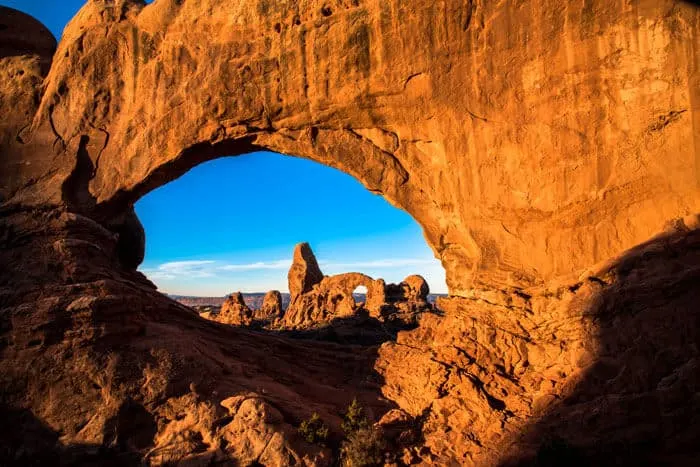 Year Established: 1971
Year Established: 1971
Annual Visitors: 1.7 million
Best Time to Visit: March to May, September to November
Arches National Park Highlights: Hike Delicate Arch for sunset, visit the Double Arch, see Balanced Rock and the Fiery Furnace & Hike Windows Loop (Read all about the best Hikes in Arches NP here!)
Arches National Park is located in northeastern Utah, and is known for its over 2,000 natural sandstone arches that are spread throughout the park. The park’s red rock formations, canyons, and arches offer visitors a glimpse into the natural beauty of the American Southwest.
The park’s most famous arch, Delicate Arch, is a must-see. The arch is visible from a viewpoint accessible by a moderate 3-mile round-trip hike. The Park Avenue area, which features a 2-mile round-trip hike, is also a popular spot, offering visitors a chance to see towering red rock fins and other unique rock formations.
The best time to visit Arches National Park is during the spring and fall, when temperatures are mild and the park is less crowded. During the summer, the park can get very hot, and the park’s trails can be quite strenuous in the heat.
In the winter, the park is open but some of the roads and trails may be closed due to snow and ice. Overall, the park is open year-round, but the best time to visit is during the spring and fall.
Hawaii Volcanoes National Park (Hawaii)
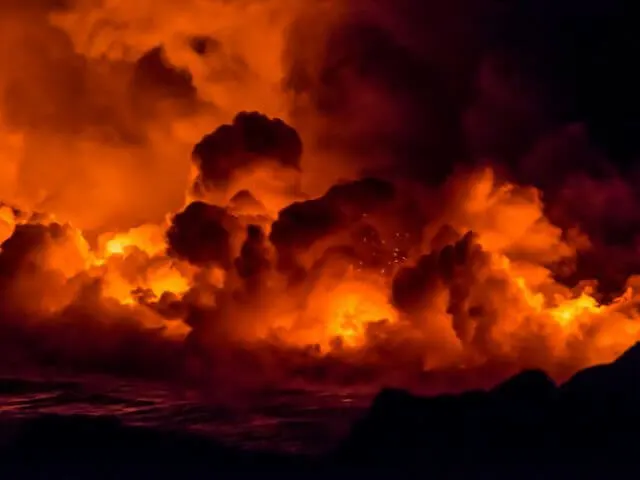 Year Established: 1916
Year Established: 1916
Annual Visitors: 1.4 million
Best Time to Visit: All year
Hawaii Volcanoes National Park Highlights: Hike Thurston Lava Tube Trail, Drive Crater Rim and Chain of Craters Road, View lava flow at Halema’uma’u Crater.
Hawai’i Volcanoes National Park is located on the Big Island of Hawaii and is home to two of the world’s most active volcanoes, Kīlauea and Mauna Loa. The park was established in 1916 and spans over 323,000 acres. It is home to a diverse array of plant and animal life, including the endangered Hawaiian goose and the rare Hawaiian silversword plant.
One of the main highlights of the park is the opportunity to see active volcanic activity. Visitors can hike to the summit of Kilauea to see the volcano’s caldera and the Halema’uma’u crater, or take a drive on the Chain of Craters Road to see the results of past eruptions.
The park also features several hiking trails, including the Devastation Trail, which takes visitors through a forest devastated by volcanic activity.
The best time to visit the park is during the drier months, from April to September. Visitors should also be aware that volcanic activity can affect trail and road closures, so it is important to check with the park for the latest updates before planning a trip.
Capitol Reef National Park (Utah)
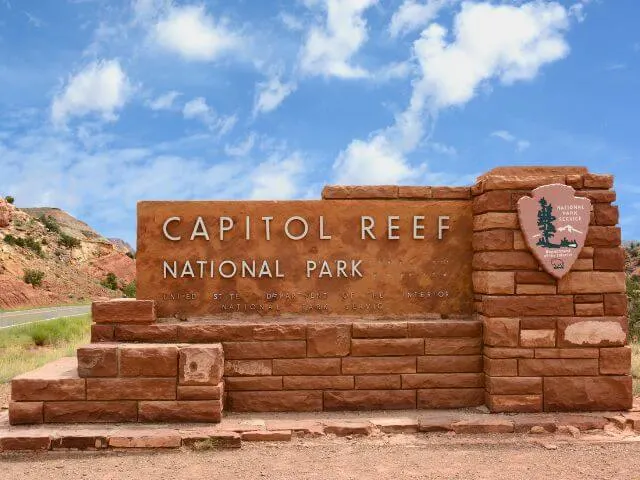 Year Established: 1971
Year Established: 1971
Annual Visitors: 1.2 million
Best Time to Visit: March to May, September to November
Capitol Reef National Park Highlights: Hike Cohab Canyon and Cassidy Arch, Drive Capitol Gorge Road & The Scenic Drive
Capitol Reef National Park is located in south-central Utah and was established as a national park in 1971.
The park is known for its colorful sandstone cliffs and rugged landscape, as well as its historic orchards and pioneer settlements. The park’s main feature is the Waterpocket Fold, a 100-mile long wrinkle in the Earth’s crust that has created a unique landscape of cliffs, canyons, and domes.
The park offers a variety of activities for visitors including hiking, backpacking, and rock climbing.
The park’s scenic drive, the Capitol Reef Scenic Drive, offers visitors a chance to see the park’s main features, and the park has many hiking trails for visitors to explore.
The best time to visit Capitol Reef National Park is during the spring and fall when temperatures are mild and the crowds are smaller. Summer can be quite hot and the park can be quite crowded during the peak tourist season.
Saguaro National Park (Arizona)
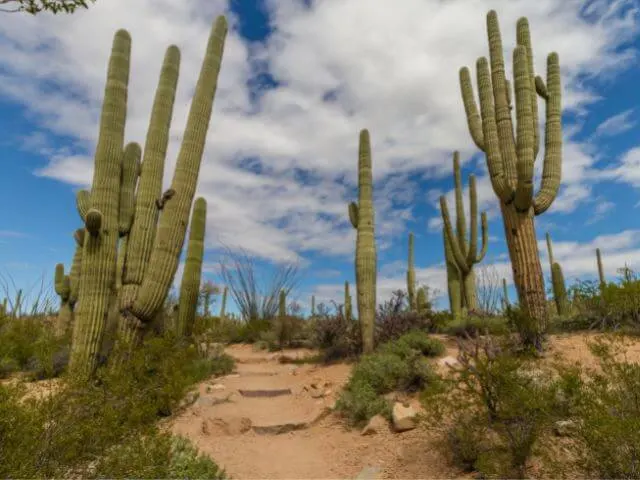 Year Established: 1994
Year Established: 1994
Annual Visitors: 1.0 million
Best Time to Visit: October to November and February to March
Saguaro National Park Highlights: Drive Scenic Bajada Loop and Cactus Forest Drive, Walk the Desert Discovery Nature Trail, and Hike the Desert Ecology Trail and King Canyon.
Saguaro National Park, located in southern Arizona, is a unique and beautiful desert landscape that is home to the iconic saguaro cactus, as well as a variety of other desert plants and animals. The park is divided into two distinct districts, the Rincon Mountain District and the Tucson Mountain District, each offering its own unique landscapes and hiking trails. The Rincon Mountain District is home to the highest concentration of saguaro cacti in the park and offers spectacular views of the surrounding mountains and desert.
The Tucson Mountain District is known for its more rugged terrain, and offers visitors the opportunity to explore the park’s unique desert landscape on foot or by car. The park’s main highlight is the saguaro cactus which is the largest cactus in the United States and can live up to 200 years old.
The best time to visit Saguaro National Park is during the spring and fall, when the weather is mild and the crowds are thinner. The park is particularly beautiful during the spring, when the cacti are in bloom and the wildflowers are in full bloom.
Haleakalā National Park (Hawai’i)
 Year Established: 1961
Year Established: 1961
Annual Visitors: 995,000
Best Time to Visit: December to April
Haleakala National Park Highlights: See Haleakalā Summit at sunrise, Hike Pīpīwai Trail, visit the Seven Sacred Pools of ‘Ohe’o, Drive the nearby Road to Hāna
Haleakalā National Park is a national park located in Hawaii on the island of Maui. The park is best known for its main feature, the Haleakala volcano, which last erupted in 1790. The park offers a variety of activities for visitors including hiking, camping, and stargazing.
The park also offers a unique opportunity to witness sunrise from the summit of the volcano, a popular activity among visitors.
The best time to visit Haleakala National Park is during the months of April through September, as the weather is typically drier during these months. Visitors should also note that the summit of the volcano reaches an elevation of over 10,000 feet and can be quite chilly, so it is important to bring warm clothing.
Additionally, the park’s roads can be narrow and winding, so it is important to drive with caution. Overall, Haleakalā National Park offers visitors a chance to experience the natural beauty and unique geology of Hawaii.
Canyonlands National Park (Utah)
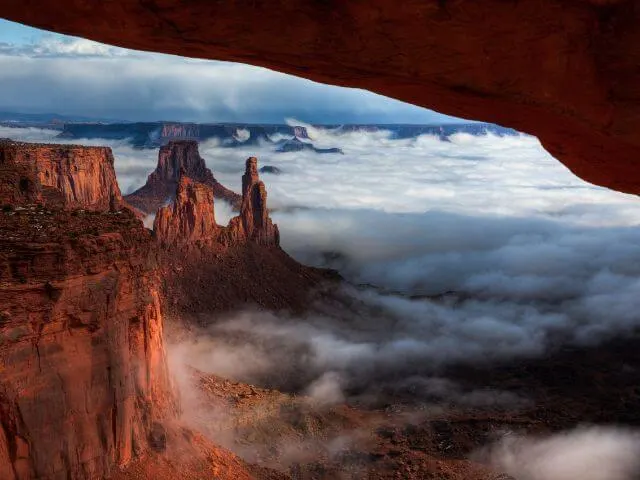 Year Established: 1964
Year Established: 1964
Annual Visitors: 735,000
Best Time to Visit: March to May, September to November
Canyonlands National Park Highlights Hike Mesa Arch for sunrise, Hike Grand Viewpoint Overlook and the Needles, See Green River Overlook and Shafer Point Overlook, explore The Maze
Canyonlands National Park is a natural wonder located in southern Utah.
The park is known for its stunning canyons, mesas, and unique rock formations. One of the highlights of the park is the Island in the Sky, a large mesa that offers panoramic views of the surrounding canyons and the Colorado River. Visitors can also explore the Needles district, where they can find towering spires, and the Maze district, which is known for its challenging backcountry hiking.
The best time to visit Canyonlands National Park is during the fall or spring, when the weather is mild and the crowds are smaller. The park can get very hot during the summer, so it is best to plan your visit during the cooler months. The park also offers many great hiking trails, so make sure to wear appropriate footwear and bring plenty of water.
Petrified Forest National Park (Arizona)
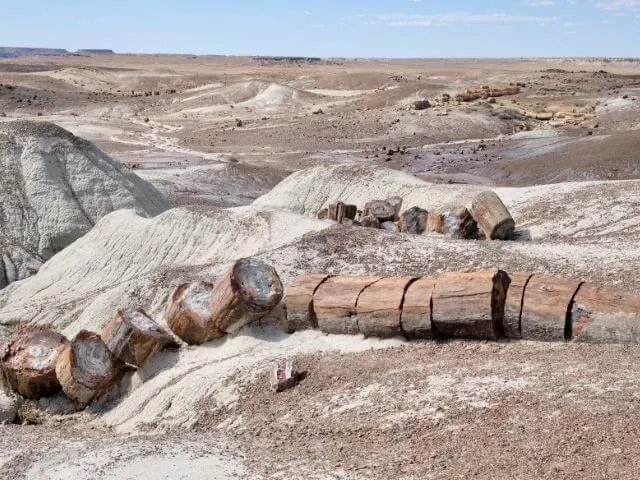 Year Established: 1962
Year Established: 1962
Annual Visitors: 640,000
Best Time to Visit: Late March to May and September to October.
Petrified Forest National Park Highlights: Tour Puerco Pueblo, See the Painted Desert and Blue Mesa, Hike Agate House, and see the petrified wood at Crystal Forest and on the Giant Logs Trail.
Petrified Forest National Park is located in northeastern Arizona and is known for its vast and colorful petrified wood, ancient fossils, and unique desert landscapes. The park’s most famous feature is the “Painted Desert”, a region of badlands that stretches for miles and features colorful rock layers of red, orange, and purple. The park also contains one of the largest and most colorful concentrations of petrified wood in the world, as well as ancient fossils of plants and animals that lived in the area over 225 million years ago.
Visitors to Petrified Forest National Park can explore the park’s many hiking trails, take a scenic drive along the park’s paved road, or visit the park’s two main visitor centers, which offer exhibits and educational programs. The park also offers guided ranger walks and talks, as well as backcountry hiking and camping opportunities.
The best time to visit Petrified Forest National Park is during the spring and fall, when the weather is mild and the crowds are thinner. The park’s colorful landscapes and rock formations are particularly beautiful during the spring and fall. Visitors should be aware that summer temperatures in the park can be extremely hot, and it is recommended that visitors plan ahead to reserve campsites and tours in advance.
Glacier Bay National Park (Alaska)
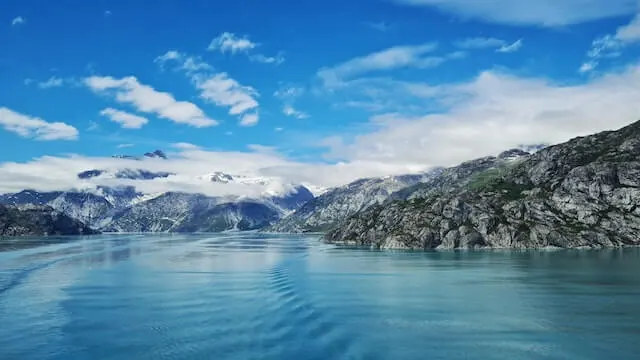 Year Established: 1980
Year Established: 1980
Size: 3.3 million acres
Annual Visitors: 670,000
Best Time to Visit: June to September
Glacier Bay National Park Highlights: The Glacier Bay Lodge boat tour, see glaciers, Hike Bartlett Cove, Kayak Muir Inlet
Glacier Bay National Park and Preserve is a stunning wilderness area located in the southern part of Alaska. The park is known for its glaciers, fjords, and snow-capped mountains, as well as its abundant wildlife and marine life. Visitors can see whales, seals, otters, and many species of birds, and there are also opportunities for kayaking, sailing, and fishing.
The park’s history is closely tied to the glaciers that formed the bay over thousands of years. The park was established in 1925 as a national monument and later became a national park and preserve in 1980. Today, Glacier Bay is one of the most popular tourist destinations in Alaska, and it’s a UNESCO World Heritage Site.
One of the highlights of visiting Glacier Bay National Park is taking a boat tour to see the glaciers and wildlife. Visitors can also hike on the park’s trails and explore the backcountry, but it’s important to be prepared for the rugged terrain, and unpredictable weather, have adequate bear safety precautions in place, and follow boating regulations.
Visitors should also be aware that the park has limited facilities and services, so visitors should plan accordingly and bring enough food, water, and other supplies.
White Sands National Park (New Mexico)
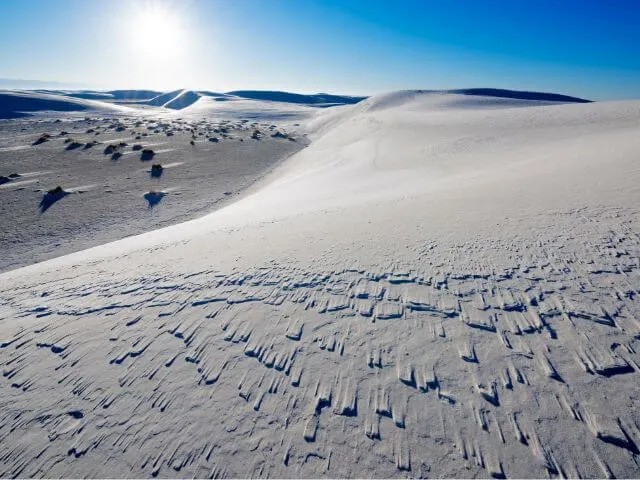 Year Established: 2019
Year Established: 2019
Annual Visitors: 610,000
Best Time to Visit: October to May
White Sands National Park Highlights: Drive Dunes Drive, Hike Interdune Boardwalk, walk the Dune Life Nature Trail, and Sled the dunes.
White Sands National Park is located in southern New Mexico, and is known for its vast expanse of white gypsum sand dunes. The park’s unique landscape was formed by the erosion of the surrounding mountains, which created the gypsum deposits that now cover the park’s 275 square miles.
The park is also home to a diverse array of plant and animal life, and visitors can enjoy a variety of outdoor activities such as hiking, camping, and picnicking.
The best time to visit White Sands National Park is between October and May, as the summer months can be extremely hot and dry. Visitors should also be prepared for sun exposure, as there is little shade in the park. Consider bringing sunscreen, sunglasses, and a hat, as well as enough water to stay hydrated. It is also recommended to wear closed-toed shoes and to stay on designated trails to avoid getting lost.
The park also offers ranger-led tours, guided walks, and full-moon night hikes that provide a unique perspective on the park’s natural beauty.
Mesa Verde National Park (Colorado)
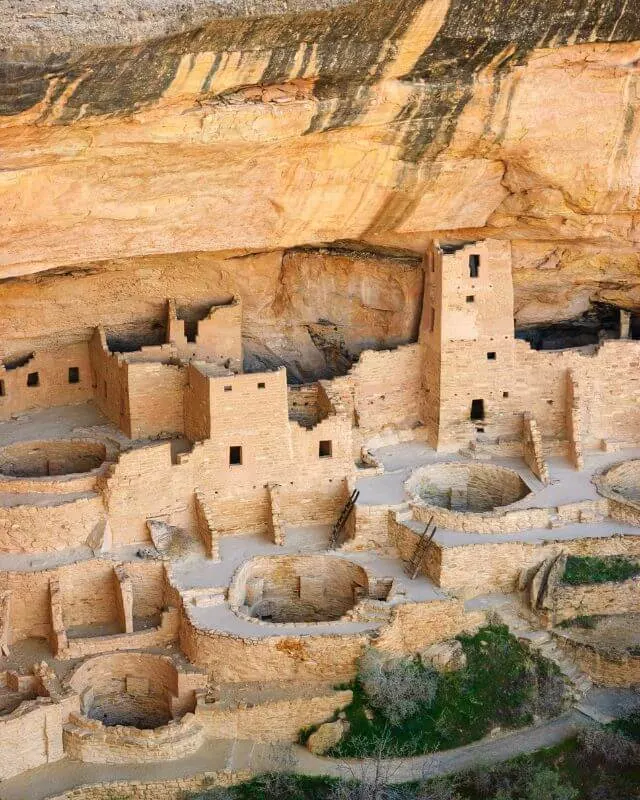 Year Established: 1906
Year Established: 1906
Annual Visitors: 550,000
Best Time to Visit: June to September
Mesa Verde National Park Highlights: Hike Petroglyph Point, drive Mesa Top Loop, Tour Cliff Palace and the Balcony House.
Mesa Verde National Park is located in the southwestern United States in the state of Colorado. The park was established in 1906 in order to preserve the ancient Puebloan cliff dwellings, which are believed to have been built by the Ancestral Puebloans people between 600 and 1300 AD. These dwellings are some of the best-preserved examples of ancient architecture in the United States.
The park’s main highlights include the Cliff Palace, the largest cliff dwelling in the park and one of the most famous in the world, and Balcony House, a smaller dwelling that requires visitors to climb a series of ladders and crawl through a tunnel to reach it. Other highlights include the Long House, Spruce Tree House and the Sun Temple.
The best time to visit Mesa Verde National Park is during the spring and fall when the temperatures are mild and the crowds are smaller. Visitors should also note that some of the park’s dwellings are only accessible via guided tours, so it is recommended to book ahead of time.
Hiking is also a great way to explore the park and take in the natural beauty of the area.
Great Sand Dunes National Park (Colorado)
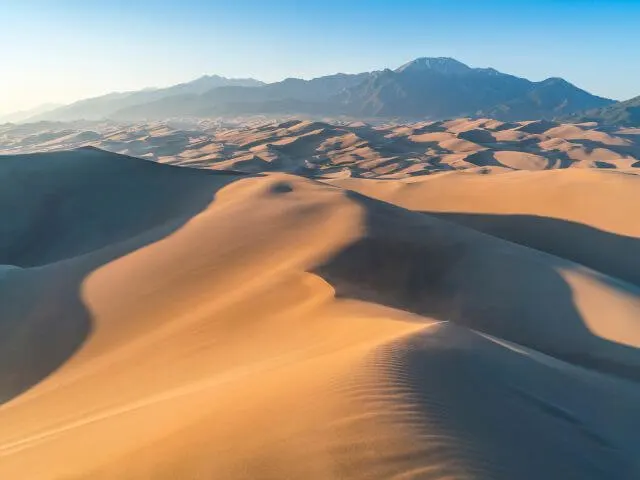 Year Established: 2004
Year Established: 2004
Annual Visitors: 530,000
Best Time to Visit: March to May, September to November
Great Sand Dunes National park Highlights: Go Sandboarding, Go Stargazing, and Hike Dunes Overlook, High Dune and Star Dune.
Great Sand Dunes National Park is located in southern Colorado and is home to the tallest dunes in North America. The park was established in 1932 and covers an area of over 150,000 acres. The dunes were formed by the erosion of the Sangre de Cristo Mountains, which caused the wind to blow sand onto the valley floor.
Visitors can enjoy a variety of activities within the park such as sandboarding, hiking, and horseback riding.
The best time to visit Great Sand Dunes National Park is in the summer months, when temperatures are warm and the park’s facilities are open. However, visitors should be aware that the park can get very hot during the day, so it’s best to plan outdoor activities for early in the morning or later in the evening. Additionally, visitors should come prepared with plenty of water, sunscreen, and sturdy shoes as the sand can be quite hot to walk on.
Carlsbad Caverns National Park (New Mexico)
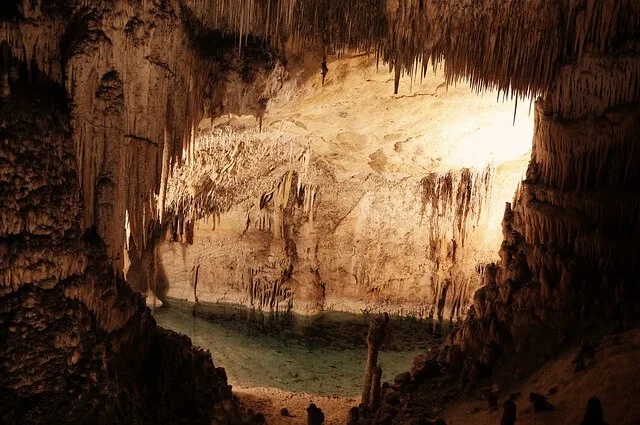 Year Established: 1930
Year Established: 1930
Annual Visitors: 440,000
Best Time to Visit: All Year
Carlsberg Caverns NP Highlights: Ranger-led tour of King’s Palace Cave, Self-guided tour of Big Room and watching the Bat Vortex as they take flight for the night
Carlsbad Caverns National Park is located in the Guadalupe Mountains of southeastern New Mexico and is known for its limestone caves, including the famous Carlsbad Cavern.
The park’s history dates back to the late 1800s, when the caverns were first discovered and explored by local cowboys and settlers. The park was officially established in 1930 and was designated a World Heritage Site in 1995.
The main highlight of the park is the Carlsbad Cavern, which visitors can explore through self-guided tours or ranger-led tours. The cavern is home to thousands of bats, which can be observed during the evening bat flight program. The park also offers hiking trails, a visitor center, and a campground.
The best time to visit Carlsbad Caverns National Park is during the spring and fall when temperatures are mild. Considerations for visitors include that the cave temperature is always around 56 degrees Fahrenheit and that the park is at an elevation of 4,000 feet, so those with respiratory issues should be aware.
Black Canyon of the Gunnison National Park (Colorado)
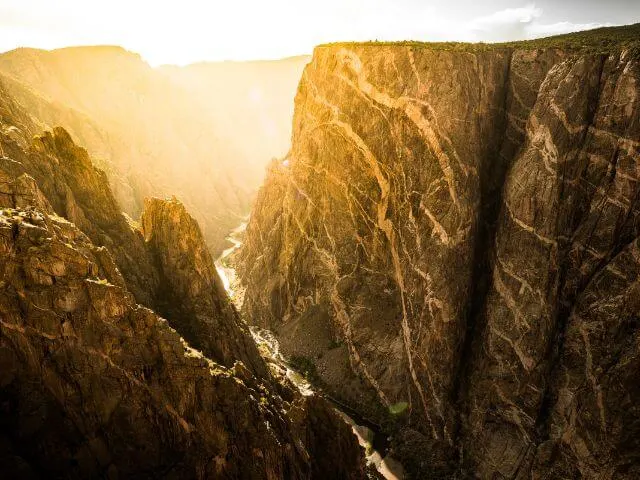 Year Established: 1999
Year Established: 1999
Annual Visitors: 430,000
Best Time to Visit: May to October
Black Canyon of the Gunnison NP Highlights: Hike to Warner Point, See Gunnison Point and Exclamation Point, Drive East Portal Road & South Rim Road
Black Canyon of the Gunnison National Park is located in western Colorado and is known for its steep and dramatic canyon walls. The park’s main feature is the Black Canyon, which was carved by the Gunnison River over millions of years. The park is open year-round, but the best time to visit is during the spring and fall when the temperatures are mild and the crowds are smaller.
The park offers a variety of recreational activities such as hiking, camping, and fishing. Visitors can hike down to the river on the North Rim Road and take in the breathtaking views of the canyon, although it is important to note that some of the park’s trails are strenuous and not suitable for all hikers. The park also offers ranger-led programs, including guided canyon floor hikes and stargazing programs.
Great Basin National Park (Nevada)
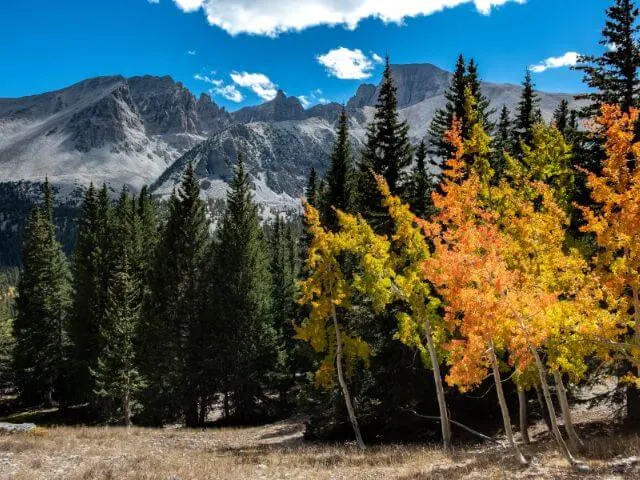 Year Established: 1986
Year Established: 1986
Annual Visitors: 130,000
Best Time to Visit: April to October
Great Basin National Park Highlights: Hike Bristlecone Trail and the Alpine Loop Trail, Drive Wheeler Peak Scenic Drive, Go Stargazing, and Tour Lehman Caves.
Great Basin National Park is known for its beautiful landscapes and diverse array of plant and animal life.
The park’s centerpiece is the 13,063-foot-tall Wheeler Peak, which is the second-highest peak in Nevada. Visitors to the park can hike to the top of the peak, which offers stunning views of the surrounding mountains and valleys. The park also offers a variety of other outdoor activities such as camping, picnicking, and bird watching.
The best time to visit Great Basin National Park is during the summer months, when the weather is mild and the park’s wildflowers are in full bloom. Fall is also a great time to visit, as the aspens and cottonwoods turn golden yellow.
Winter can be very cold and snowy, but it’s also a great time for cross-country skiing and snowshoeing. Visitors should be aware that many of the park’s trails and roads are not maintained during the winter months, so proper planning and equipment are essential.
National Park of American Samoa (American Samoa)
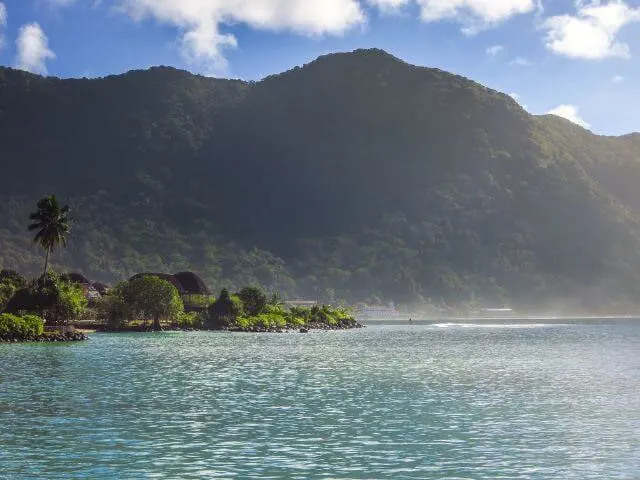 Year Established: 1988
Year Established: 1988
Annual Visitors: 60,000
Best Time to Visit: June to September
American Samoa National Park Highlights: Take a boat trip around the islands, Hike the Mount’Alava Trail, Snorkel Vatia Bay and Ofu Beach
The National Park of American Samoa is located in the South Pacific Ocean and is the only national park in the United States that is located south of the equator. The park is made up of three of the islands in the Samoan archipelago, Tutuila, Ofu, and Ta’u, and covers over 13,500 acres of land and water. The park is home to a diverse array of plants and animals, including over 900 species of fish, over 200 species of coral, and several species of birds, bats, and insects that are found nowhere else in the world.
The park is popular with visitors who are interested in hiking, snorkeling, and diving. Visitors can hike through lush rainforests, swim in crystal-clear waters, and explore the park’s coral reefs. The park also has several cultural sites, including ancient village sites and the National Park of American Samoa Visitors Center, which provides information about the park’s natural and cultural resources.
The best time to visit the National Park of American Samoa is from April to October when the weather is drier and cooler. During this time of year, visitors can expect mild temperatures, low humidity, and less rainfall. Visitors should also be aware that the park is closed on Sundays and that permits are required for certain activities, such as camping and hiking.
Free West Coast National Parks Checklist
We hope our complete guide to the National Parks in West Coast of the USA has inspired you to get out and explore the great American outdoors. It’s so much fun to check them off your National Parks bucket list – and to help you we’ve created a free printable West Coast National Parks checklist, available as an image or PDF. This image itself is printable, but click the link if you would prefer a free PDF West Coast National Parks Checklist.
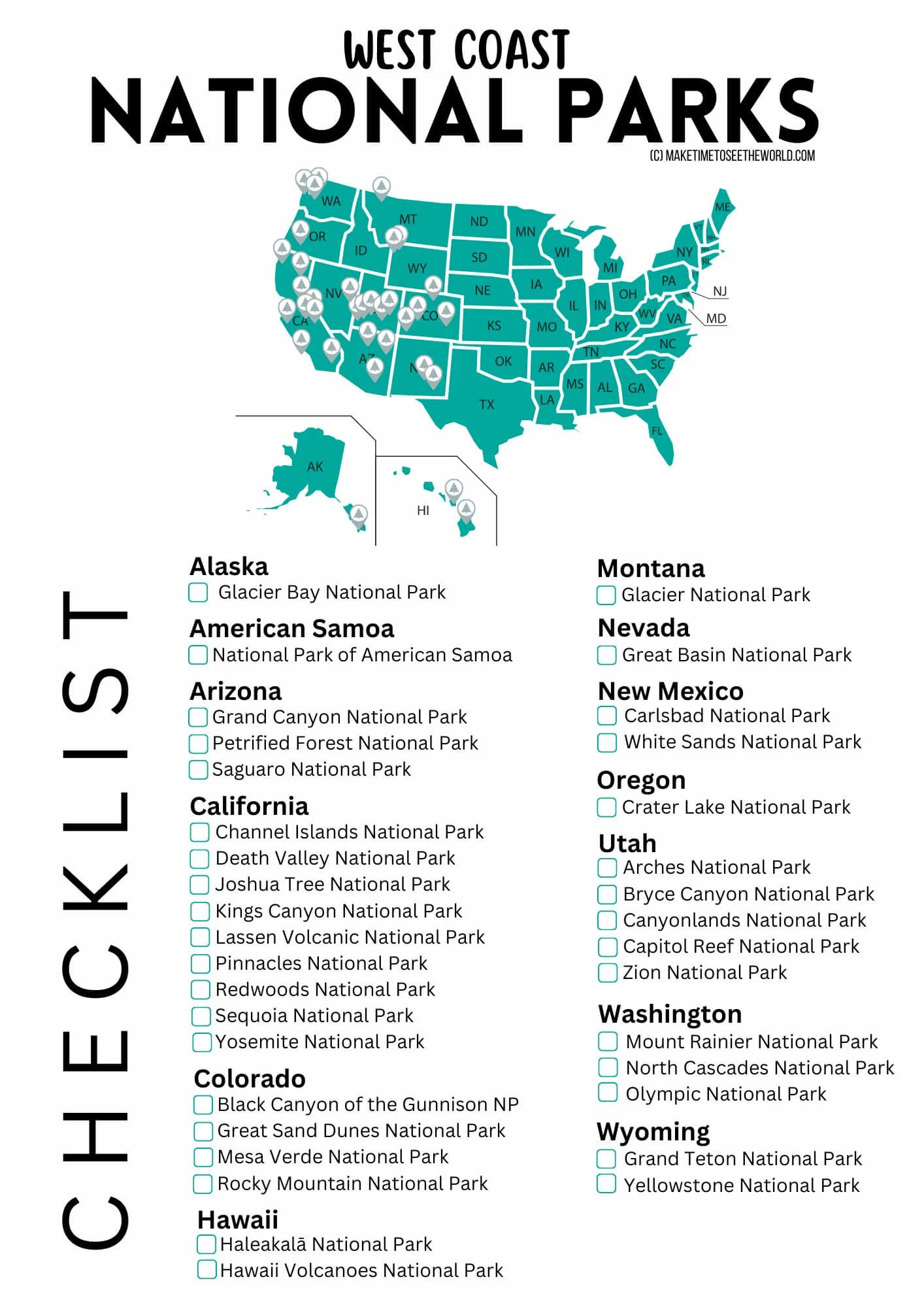
West Coast National Parks by State (A Summary)
ALASKA: Denali, Gates of the Arctic, Glacier Bay, Katmai, Kenai Fjords, Kobuk Valley, Lake Clark, and Wrangell-St. Elias
AMERICAN SAMOA: National Park of American Samoa
ARIZONA: Grand Canyon, Petrified Forest, and Saguaro
CALIFORNIA: Channel Islands, Death Valley, Joshua Tree, Kings Canyon, Lassen Volcanic, Pinnacles, Redwood, Sequoia, and Yosemite
COLORADO: Black Canyon of the Gunnison, Great Sand Dunes, Mesa Verde, and Rocky Mountain
HAWAII: Haleakala and Hawai’i Volcanoes
MONTANA: Glacier (and Yellowstone)
NEVADA: Great Basin
NEW MEXICO: Carlsbad Caverns and White Sands
OREGON: Crater Lake
UTAH: Arches, Bryce Canyon, Canyonlands, Capitol Reef, and Zion
WASHINGTON: Mount Rainier, North Cascades, and Olympic
WYOMING: Grand Teton and Yellowstone
With so many incredible West Coast National Parks it can be a little overwhelming, but we hope our complete guide to the National Parks on the West Coast of the USA has helped you narrow down which ones you want to tick off your National Park Bucket List first!
We hope our West Coast US National Parks List had been a huge help in planning your adventures, and if you know of anyone else that needs a little bit of inspiration or assistance in planning their National Parks trip, please be sure to share on social media: Facebook, Flipboard, Twitter or grab an image from below for Pinterest. And remember – sharing is caring (and we thank you in advance!)
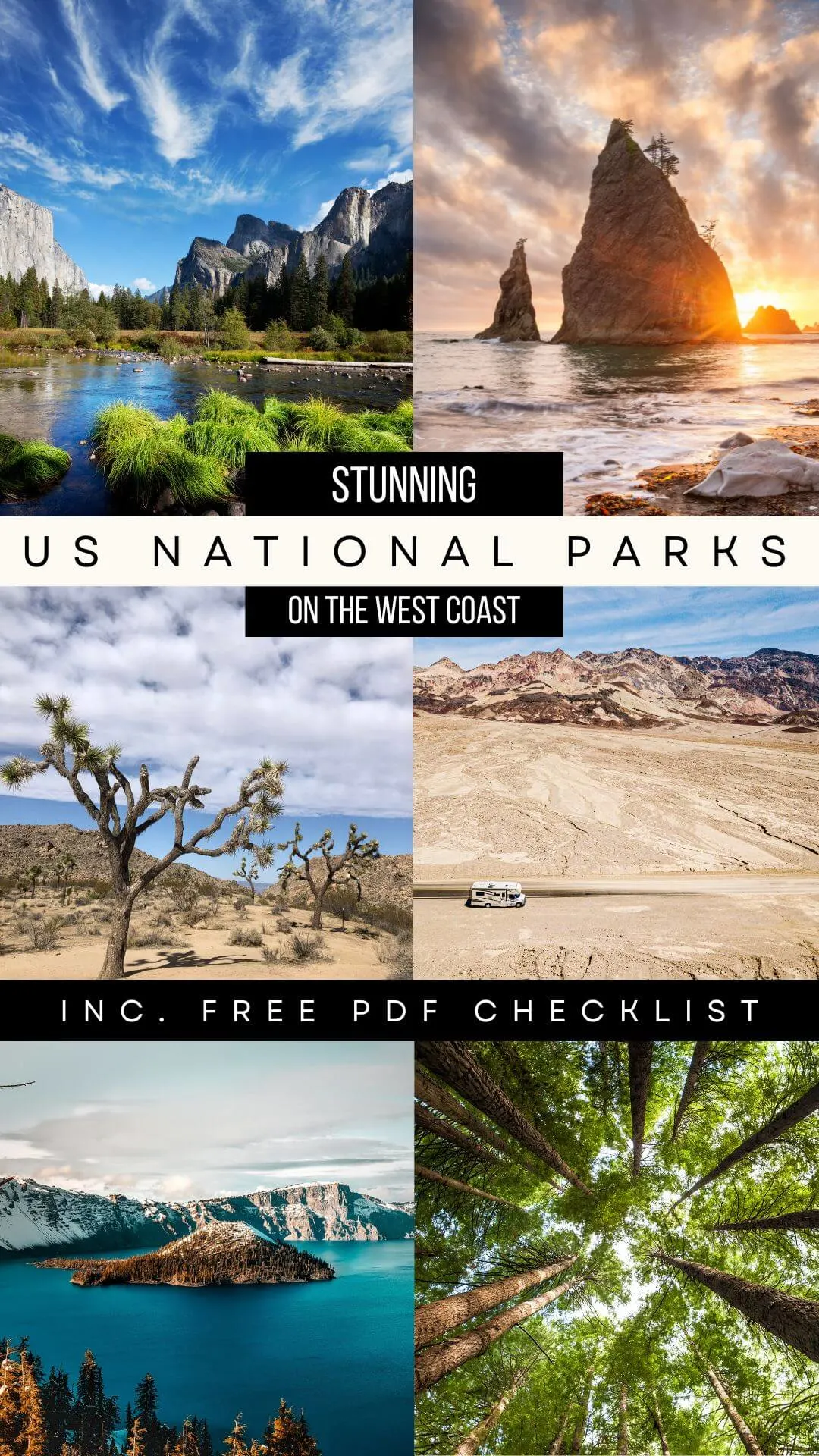
or view our West Coast National Parks Web Story here.
READY FOR MORE USA TRAVEL INSPIRATION? YOU MIGHT BE INTERESTED IN THESE TRAVEL TIPS, TRAVEL ARTICLES, DESTINATION GUIDES, TRAVELER RESOURCES, AND RELATED POSTS ABOUT OTHER AMAZING CITIES IN NORTH AMERICA:
- Chicago: An Awesome Weekend in Chicago – Things to do, Where to Stay & What to eat!
- Los Angeles: An Incredible Weekend Getaway in Los Angeles
- Dallas: Everything’s bigger in Texas and Dallas & Dallas Fort Worth are no exception!
- Las Vegas: Get the Best of Sin City! Things to do, where to stay and where to eat! + Where to stay in Las Vegas (whatever your budget), the TOP 40+ FREE Things to do in Las Vegas, Best Things to do in Downtown Las Vegas, Road Trips from Las Vegas, Best Things to do in Downtown Las Vegas & Las Vegas Tip to Know Before You Go
- Portland: 10 Fun Things to do in Portland Oregon + Day Trips from Portland
- Cincinnati: Things to do in Cincinnati & Day Trip Ideas
Hi There! Thanks for reading the Ultimate West Coast National Park List and Travel Guide – I just wanted to let you know that this post contains affiliate links, which means if you purchase something after clicking a link, I may get a small commission – which is at absolutely no cost to you. If you enjoyed this article and are going to be searching for some of the things I mention anyway, I would love it if you could click through from the links above & thank you in advance! Read my full Disclosure here.
And a huge Thank You for reading the MakeTimeToSeeTheWorld travel blog.
